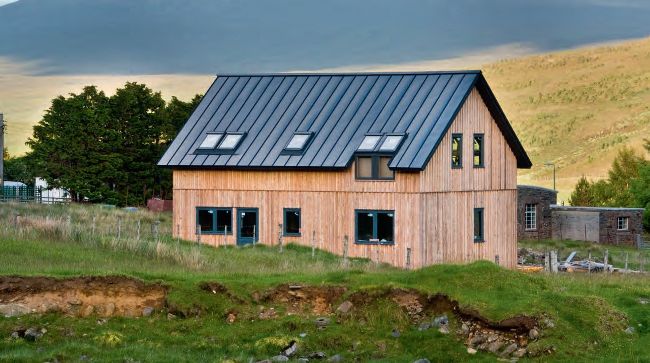Covering options for your contemporary home
Your roof will add to the kerb appeal of your modern-style home, so choosing the right covering is essential when it comes to creating the desired aesthetic. Jane Crittenden explores the options

The Colorcoat Urban roofing system on this house in Scotland brings architectural appeal and an aesthetic that blends the property into its surroundings – and works well with the structural insulated panel (SIPs) roofing system. Find out more about SIPs on page 84
The roof will play an important role in defining the appearance of your home and, of course, needs to be an effective shield against the elements. The type of covering you choose will be part of the overall design strategy, but may also need to reflect the environment around you. For example, your local authority could ask you to match the slate of neighbouring properties or stipulate a green roof so your house blends into an open rural landscape.
The roof pitch and profile also needs to come into play. “The golden rule in roof design is not to force a material to do something it can’t technically do,” says Steven Harris from CRSH Architects. “For instance, slate can’t be laid at a low pitch.